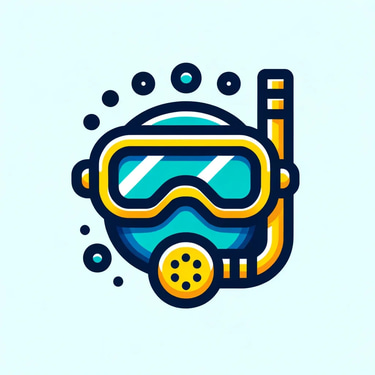How to Get Comfortable Breathing Underwater
New to scuba diving? Learn how to overcome anxiety and get comfortable breathing underwater with these proven tips for beginner divers.
IF YOU ARE NEW TO DIVING...START YOUR JOURNEY HERE


How to Get Comfortable Breathing Underwater
For new divers, the first few breaths through a regulator can feel strange—even a little overwhelming. Breathing underwater is one of the biggest adjustments when learning to scuba dive, and feeling uneasy at first is completely normal. The good news? With a bit of practice and patience, it becomes second nature.
Start Slowly in a Controlled Environment
Most dive certification courses, like those from PADI or SSI, begin in a pool or shallow water. This controlled setting lets you focus on your breathing without worrying about waves, currents, or depth. Take slow, deep breaths through your mouth and listen to the sound of your regulator—it can be oddly calming once you get used to it.
Focus on Relaxed, Steady Breathing
The biggest mistake new divers make is taking short, shallow breaths or holding their breath out of nervousness. Remember the golden scuba rule: never hold your breath underwater. Inhale slowly, exhale fully, and find a rhythm. This not only helps you relax but also conserves your air supply.
Practice “Dry Runs” Before Your Dive
Many instructors recommend practicing with your regulator or snorkel at the surface before descending. Get used to the feel of the mouthpiece and the airflow. You can even practice at home with a snorkel in a bathtub or pool to get comfortable with mouth-only breathing.
Stay Calm and Adjust Your Mindset
Feeling anxious? You’re not alone. Try visualizing your dive ahead of time and remind yourself that your gear is designed to deliver air reliably. If you start to feel panicky underwater, pause, hover in place, and take slow breaths until you feel steady again.
Use a Properly Fitted Mask and Regulator
An ill-fitting mask or a leaky regulator can add to stress. Make sure your mask seals properly and your regulator mouthpiece feels comfortable. If you’re renting gear, don’t hesitate to ask your dive shop for adjustments or different options—it can make a world of difference.
Practice Makes Perfect
The more time you spend underwater, the more natural breathing will feel. Start with shorter dives or shallow training sessions and gradually increase your time and depth. Over time, that first awkward breath will turn into second nature.
Happy and safe diving,
The ScubaBlast Team
Divers Alert Network. (2023). Learning to breathe underwater: Tips for new divers. Retrieved from https://dan.org/health-medicine/health-resources/dive-safety/learning-to-breathe-underwater/
PADI. (n.d.). New diver tips: Breathing techniques for comfort and safety. Retrieved July 27, 2025, from https://www.padi.com/articles/new-diver-breathing-techniques
SSI. (n.d.). Getting started with scuba: Overcoming common fears. Retrieved July 27, 2025, from https://www.divessi.com/en/blog/getting-started-scuba-diving
